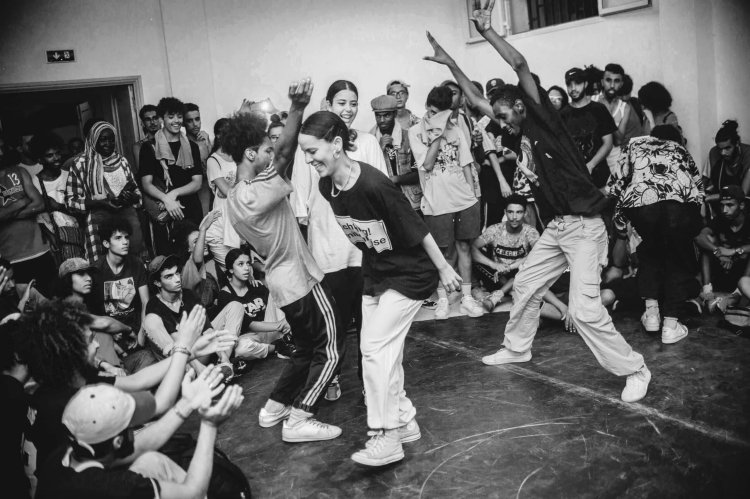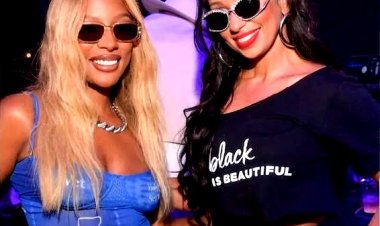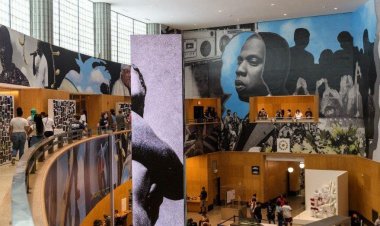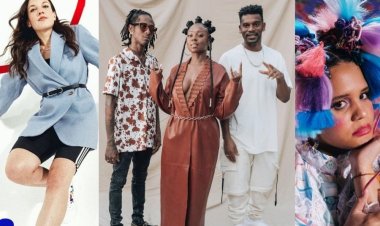Beyond the Glitter How Pop Culture Is Reshaping Urban Life

Pop Culture's Increasing Focus on Gritty Urban Settings
Pop culture has increasingly focused on gritty, realistic depictions of urban life. Shows like The Wire, Atlanta, and Brooklyn Nine-Nine highlight the challenges of city living. Movies like 8 Mile, Kids, and Do The Right Thing tackle difficult issues like crime, poverty, and racism in urban settings. This shift to more authentic representations of cities marks a move away from the glamorized versions often shown in media.

The rise of hip-hop and street art has also brought more attention to the realities of urban culture. Artists like Kendrick Lamar, Cardi B, and Post Malone rap about growing up in troubled neighborhoods and struggling with societal problems. Street artists like Banksy and Shepard Fairey use city walls as canvases to spread messages about urban issues. Their raw, thought-provoking works highlight topics like inequality, consumerism, and the human condition.
With growing urban populations, it’s important that we develop a deeper understanding of city life in all its facets. Grittier pop culture exposes audiences to the challenges of urban living they may not otherwise experience. Though often unflinching, these authentic depictions can inspire empathy and motivate change.
By embracing more realistic representations of cities, pop culture is helping to reshape how we think about urban life. No longer just a glittering playground, cities are complex ecosystems encompassing both hardship and hope. Grittier pop culture gives a voice to those struggling in cities and helps ensure that their experiences—for better or worse—are not forgotten.
Food Trends Reflecting Diverse Urban Tastes and Traditions
Food trends in cities often reflect the diversity of cultures in one place. As people from around the world settle into urban life, they bring flavors, ingredients and traditions that fuse into the fabric of a city.
Fusion Cuisine
One result of cultural blending in cities is fusion cuisine. Chefs combine ingredients, cooking techniques and flavors from different culinary traditions to create something new. For example, Korean tacos blend spicy kimchi and bulgogi with Mexican tacos. The sweet and savory flavors of Thai chili sauce might meet Italian pasta. Fusion cuisine allows people to experience the familiar in new ways.
Food Halls and Trucks
Rather than fancy, expensive restaurants, many city dwellers prefer casual food halls and food trucks. Food halls offer a variety of small food stalls and vendors under one roof so people can sample different cuisines. Similarly, food trucks bring diverse, inexpensive eats to people around the city. Some food trucks even fuse international flavors, like Korean BBQ tacos or banh mi burgers.
Home Cooking Away from Home
Comfort food takes on new meaning in cities as people crave tastes of home. Restaurants often specialize in home-style cooking from different regions. Someone far from West Africa can find jollof rice, plantains and egusi soup. Those missing South Asia may find dal makhani, parathas and masala chai. Home cooking connects transplants to familiar places through flavor and aroma.
Urban life moves fast, but food has a way of slowing things down. Mealtimes give people an opportunity to share traditions, bond over new experiences and celebrate diversity. Food trends in cities reflect how cultural influences blend to create new flavors that comfort and surprise. Amid the bustle, food brings people together.
Reimagining Cities: The Impact of Pop Culture on Urban Planning and Policy
Pop culture shapes how we view and experience the world, including the places where we live. The movies, TV shows, books, music, and social media that permeate our lives often glamorize certain aspects of city life while ignoring the harsher realities. But some recent pop culture phenomena are helping to reimagine cities in more well-rounded, constructive ways.
Addressing Real Issues
Some TV shows and movies are tackling serious urban issues like lack of affordable housing, homelessness, and gentrification. The show “Atlanta,” for example, highlights challenges around poverty, race relations, and inequality in its namesake city. Similarly, “The Last Black Man in San Francisco” examines themes of belonging and gentrification in one of America’s most expensive cities. While these portrayals don’t necessarily lead to policy changes, they do raise awareness of urban problems and help humanize their impact.
Celebrating Diversity
Other pop culture is promoting more inclusive, multi-cultural visions of cities. The musical “In the Heights” celebrates Latino culture in New York City's Washington Heights neighborhood. Some travel shows and accounts on platforms like YouTube and Instagram highlight the cultural richness of diverse, immigrant-rich communities around the world. They portray cities as vibrant, dynamic places enriched by cultural fusion.
Reimagining Public Spaces
Some urban planners and designers are even taking inspiration from science fiction books, movies, and video games. They see opportunities to make cities more high-tech, eco-friendly and community-oriented. For example, the idea of self-driving electric vehicles, popularized by films like “Minority Report,” is influencing transportation plans. And some parks and public spaces are incorporating interactive art and virtual reality elements, like an “alternative reality” game in Austin's Zilker Park.
While pop culture often idealizes city life, some of it is helping to promote more inclusive, socially-conscious visions of urban living. And as cities continue to grapple with issues like affordable housing, inequality, and sustainability, pop culture could provide useful inspiration for new solutions. But real progress will require political will and community participation—not just imagination.

 Admin
Admin 










